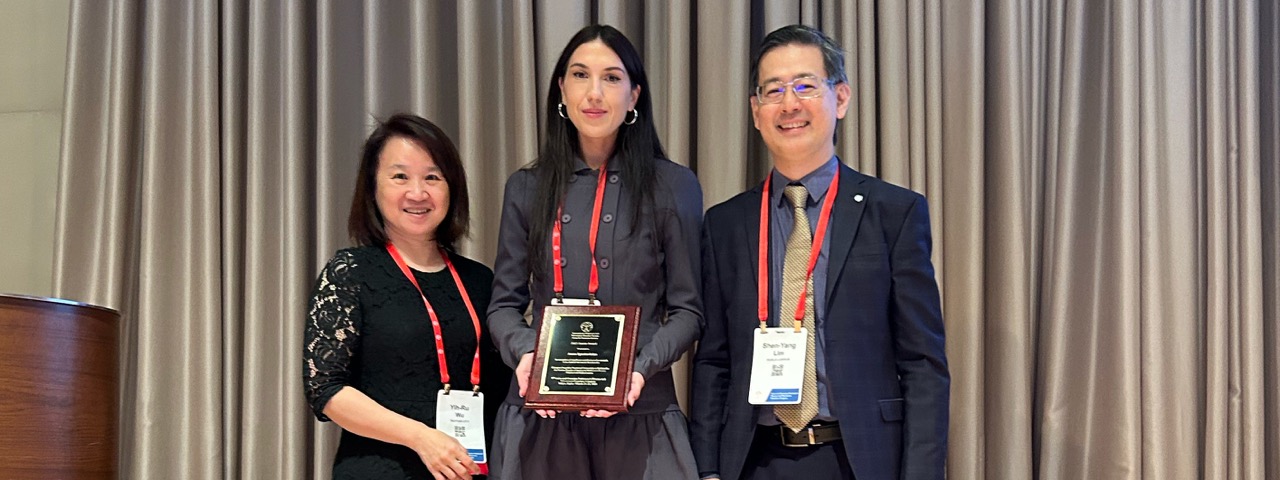 VOLUME 29, ISSUE 2 • JUNE 2025. Full issue »
VOLUME 29, ISSUE 2 • JUNE 2025. Full issue »

Disrupted amygdala functional connectivity is mediated by the nucleus basalis of Meynert in Parkinson’s disease patients with hallucinations

It was an honor to receive the Junior Award at the 2025 Asian and Oceanian Parkinson’s Disease and Movement Disorders Congress (AOPMC) in Tokyo for our work investigating the convergent impact of amygdala and cholinergic dysfunction on visual hallucinations in Parkinson’s disease. This study forms part of my PhD, which is centred on deepening our understanding of the cholinergic contributions to these symptoms, and it was a privilege to share these findings with such an esteemed audience. I am immensely grateful to the patients and their caregivers who generously volunteered their time, and to my supervisors, Dr. Elie Matar and Prof. Simon Lewis, for their support and guidance.
Visual hallucinations represent a common and troubling non-motor feature of Parkinson’s disease, ranging from misperceptions and illusions to formed, complex visions, which may then progress further to psychosis. Importantly, these symptoms are associated with worse patient outcomes and a more aggressive clinical trajectory. Despite their prevalence and impact, the neural mechanisms underlying visual hallucinations remain incompletely understood.
Previous work from our team and others has contributed to conceptual models of visual hallucinations, highlighting dysfunction in large-scale neural networks underpinning attention and sensory integration.1,2 In parallel, neurobiological studies have identified pathological changes in the amygdala and widespread cortical cholinergic deficits as being important for visual hallucinations.3,4 However, the interaction of these seemingly separate pathologies, and their combined contribution to the neurobiological mechanisms underlying hallucinatory phenomena, has yet to be explored.
Using resting-state functional MRI in 70 individuals with Parkinson’s disease, 30 of whom experienced visual hallucinations, we examined the functional connectivity of the amygdala and cholinergic nucleus basalis of Meynert with key cortical networks associated with attentional and visual processing. Next, given the established role of the cholinergic system in regulating attention, we performed mediation analyses to determine if the relationship between amygdala-attentional network dysfunction and hallucinations is dependent on changes to nucleus basalis connectivity
Our results demonstrated that, compared to their non-hallucinating counterparts, Parkinson’s disease patients with visual hallucinations show reduced amygdala coupling with ventral extrastriate regions of the visual network, as well as diminished connectivity to both the dorsal attention network and the ventral attention network. Uniquely, we observed that the functional integrity of interactions between the nucleus basalis and the ventral attentional network mediated the relationship between disrupted amygdala-attentional network connectivity and the presence of hallucinations.
These findings build upon prior studies that have typically explored the relevance of these nuclei in isolation, showing that while changes within these regions may be necessary, taken alone they are not sufficient to fully account for visual hallucinations. Instead, our results indicate that it is the “double hit” that appears to be key, which draws attention to the need to consider interactions between multiple pathologically affected circuits.
Looking ahead, conventional resting-state connectivity analyses such as ours can only provide insights into the trait-level features that may predispose individuals to hallucinate. Therefore, incorporating behavioral tasks that simulate hallucinatory experiences with dynamic functional connectivity approaches could illuminate the transient, paroxysmal aspects of these phenomena. Pharmacological neuroimaging studies that manipulate cholinergic tone may help to further clarify the precise role of cholinergic dysfunction. Finally, as cholinergic denervation in Parkinson’s disease occurs alongside other neurotransmitter changes, future research could examine how these systems interact, particularly with respect to network dysfunction. Ultimately, working towards a more comprehensive understanding of the neurobiological mechanisms of visual hallucinations will pave the way for the development of robust biomarkers and much-needed targeted interventions.
References
1. Collerton D, Barnes J, Diederich NJ, et al. Understanding visual hallucinations: A new synthesis. Neuroscience & Biobehavioral Reviews. 2023/07/01/ 2023;150:105208. doi:https://doi.org/10.1016/j.neubiorev.2023.105208
2. Shine JM, Halliday GM, Naismith SL, Lewis SJG. Visual misperceptions and hallucinations in Parkinson's disease: Dysfunction of attentional control networks? Movement Disorders. 2011;26(12):2154-2159. doi:https://doi.org/10.1002/mds.23896
3. Harding AJ, Stimson E, Henderson JM, Halliday GM. Clinical correlates of selective pathology in the amygdala of patients with Parkinson's disease. Brain. Nov 2002;125(Pt 11):2431-45. doi:10.1093/brain/awf251
4. Ignatavicius A, Matar E, Lewis SJG. Visual hallucinations in Parkinson's disease: spotlight on central cholinergic dysfunction. Brain. Sep 10 2024;doi:10.1093/brain/awae289
Read more Moving Along:






